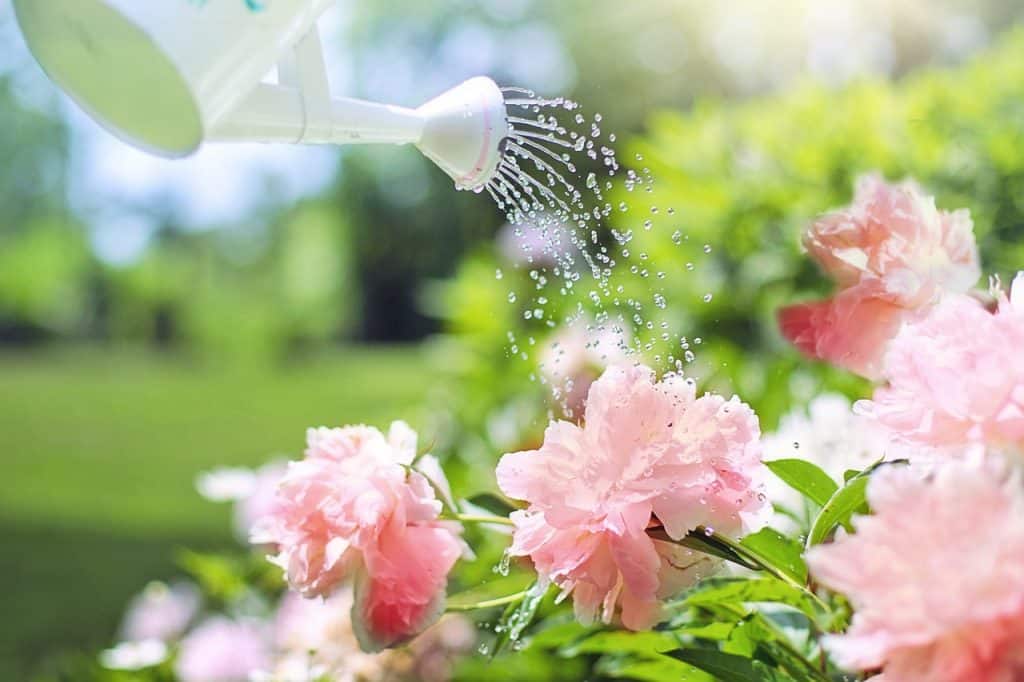‘When the snow melts and the temperatures being to rise, when should I begin to water my plants or grass?’
If you find yourself wondering the same thing, we are here to share the key insights our industry experts follow to ensure your plants and grass survive the warming temperatures. There are two key factors to know about your property to guarantee proper watering. Keep reading to be the envy of your neighbors with the greenest and healthiest landscape around!

What Is My Soil Type?
Determining what type of soil you have can assist in knowing at what frequencies you should be watering your plants and grass. To find out what soil type you have, we recommend taking a small hand shovel and digging about 10-inches down in the area you are wanting to water. Gather a handful of soil and press it between your fingers. When the soil is gritty, you have a high percentage of sand, if it is sticky and clumps together, you have a higher percentage of clay, and if it feels smooth and almost slimy, you have silt.
Most areas will have a mixture of soil types. To ensure an accurate reading, you may need to evaluate multiple areas. Always go with the majority soil type, and remember your plants prefer a healthy and balanced mixture of soil types.
GET YOUR SOIL PROFESSIONALY TESTED
HOW TO GET YOUR SOIL TESTED

What Other Elemental Factors Affect My Watering?
While the soil is the base of your landscaping’s success, other elemental factors also contribute to how often you should water. These factors include:
SUNLIGHT OR SHADE | If your property receives a lot of sunlight, your landscaping can dry out faster and even bake in the sun. Watering more frequently and either in the early morning or late-afternoon is best to avoid roasting your landscaping. Likewise, if your property is shaded, you may not need to water as frequently as the soil retains its moisture. Check the soil prior to watering.
WINDY DAYS | On extra windy days, your plants and grass can dry out faster. Pay attention to your soil to see if watering is needed.
RECENTLY PLANTED | If your grass or plants are recently planted they will require more attention and care. As the plants and grass establish themselves, you’ll be able to water less and less. Also, keep in mind the size and species of your plants as a tree will require less water than a hydrangea.
DRY SPELLS | On those days with low moisture or drought-like conditions, watering more frequently may be needed. Adequate moisture in the soil encourages root expansion, so be sure to water the soil and not the foliage to avoid wilting, browning or dying landscape vegetation.
When To Begin Watering Guidelines
Wait to begin watering until temperatures consistently hit around the 60-65° mark for multiple days. Then you are clear to follow the watering guidelines below to maximize your landscaping’s longevity. Avoid light waterings! You want to water heavily to promote deep root growth and always evaluate your soil prior to watering to avoid drowning your vegetation.
| Weather Conditions | Daytime Temperature | Sandy Soil | Clay Soil |
|---|---|---|---|
| Wet | Under 60° | Rarely | Rarely |
| Cool | Less Than 65° | Only As Needed | Only As Needed |
| Warm | 65°-80° | Every Other Day | Every 2-3 Days |
| Humid | Above 60° | Water As Needed | Water As Needed |
| Hot | Above 80° | Every Day | Every Day |
Skip The Headache
Eliminate the headache of trying to figure out when and how much to water by installing an irrigation system with a smart controller. This automatically adjusts its watering to match environmental, weather, soil and so many other factors.

